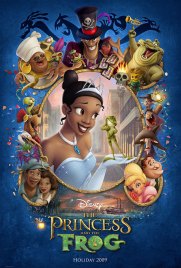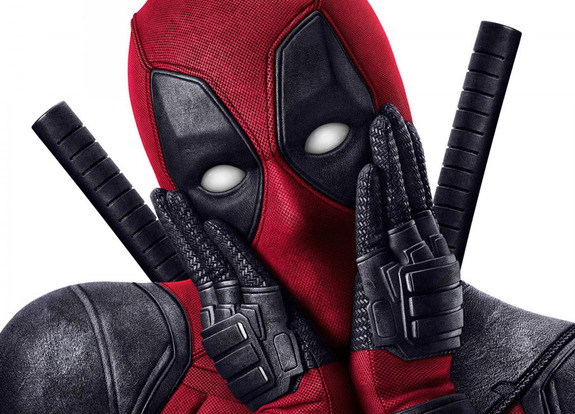What makes a film a cult classic?
First and foremost, it takes a good screenplay/story. Second, a passionate fan base. Third, next to no box office profit.

When an un-marketed film hits the theatres
This third point is bothersome. No profits means studios will refrain from making more films of that fashion, regardless of how good it is. They often don’t receive sequels,or in the rare case that they do, it only happens later on in life due to post- release sales and the high praise the fan base has given it. Basically, if it’s considered a cult classic, it didn’t make any money upon release, which is obviously bad.
But how does this happen? I mean if it’s a cult classic, that must mean it’s good. So why isn’t it making money in the box office? Simply put, bad ,or even no marketing,advertisement and public relations. Some cult classics have a valid excuse.They were an independent movie and didn’t have a big enough budget to afford a decent marketing campaign. A great example of this is the movie Clerks.

Poster for the movie “Clerks”
For those of you who don’t know, Clerks is an independent movie by Kevin Smith that was released in 1994. The budget for clerks while filming in 1993 was a only a little over $27,500. Considering that it had about $3 million in profits, it did pretty good for itself, but is not considered a “successful” movie. In this scenario, we can’t blame Kevin Smith for not paying for a lot of marketing or advertising for the movie, he couldn’t even afford to film the movie in colour ( yes, it’s a black and white film).
Anyone who has seen this movie can tell you that the dialogue is on point and it can relate to anyone who has ever had a “clerk” type job. It is loved by its fanbase for a reason. But, is not as well known as it should be. Had it had more funding for promotion, it could have easily become a world-renowned movie. If you have seen it, then you know it should have made much more money.
Some cult classics don’t have such a valid reason to have been unsuccessful in the box office. A prime example is The Shawshank Redemption. That’s right, one of the highest rated movies of all time is, by definition, a cult classic.

Famous scene from ” The Shawshank Redemption”
With a budget of $25 million, it only made just over $725 thousand its opening weekend in 1994. But with outstanding reviews and its gained popularity through VHS and DVD sales, its gross income, as of 2012, is over $28 million. Hard to believe such a popular and beloved movie did so poorly in the box office, but it’s true.
This is why marketing,advertising and public relations is so important in the film industry. These amazing movies didn’t make a lot of money at first, and this is cause for concern for the film industry. Especially when poorly rated movies make a killing at the box office. The production companies are only after making money, and when good movies like these don’t make any, then there won’t be any more movies like them made again.
With proper marketing,advertising and public relations, these movies can be successful. Once that happens, we won’t only have poorly written action movies with big explosions and plot holes in theatres, but good stories with depth and meaning.
These cult classics were lucky they got the recognition they deserved, but imagine all the great movies that no one knows about because of a lack of good promotion. Maybe you’ll never see your favourite movie because you’ve never heard of it, and never will.
Alex Belanger








 When this film was released by Disney in 1951, it was picked apart by its viewers. British critics were saying that Disney had “Americanized” what was originally an English novel written by Lewis Carroll back in 1865. These critics did not like the fact that the original components from the story had been modernized upon creation of the production. The movie was also criticized for its “technicolour” experience and funky vibes. Many people believed that the bright colours, offbeat settings and characters in the movie were supposed to be seen as though through the eyes of someone under the influence of hallucinogenics. They argued that it was not at all appropriate for the young viewers the film was aimed toward. Moving forward from the negative critiques, it has been argued by Disney and other movie-goers that the use of the vivid colour and dramatic characters was in fact a great sense of creativity and expression. Back when the film was released, vivid images were not often seen, so by presenting them in Alice in Wonderland made the viewing experience that much more entertaining. Disney was able to expand children’s imaginations through the film. As stated by a writer from the NY Times, “
When this film was released by Disney in 1951, it was picked apart by its viewers. British critics were saying that Disney had “Americanized” what was originally an English novel written by Lewis Carroll back in 1865. These critics did not like the fact that the original components from the story had been modernized upon creation of the production. The movie was also criticized for its “technicolour” experience and funky vibes. Many people believed that the bright colours, offbeat settings and characters in the movie were supposed to be seen as though through the eyes of someone under the influence of hallucinogenics. They argued that it was not at all appropriate for the young viewers the film was aimed toward. Moving forward from the negative critiques, it has been argued by Disney and other movie-goers that the use of the vivid colour and dramatic characters was in fact a great sense of creativity and expression. Back when the film was released, vivid images were not often seen, so by presenting them in Alice in Wonderland made the viewing experience that much more entertaining. Disney was able to expand children’s imaginations through the film. As stated by a writer from the NY Times, “ Upon the release on The Little Mermaid, many adults believed that the towers on the castle in the background were illustrated to represent phallic symbols. As soon as word spread about this assumption, people were up in arms about the situation, complaining to Disney about how inappropriate it was. Disney responded to this accusation by ensuring concerned parents that the towers were never ever meant to look like anything other than towers. “
Upon the release on The Little Mermaid, many adults believed that the towers on the castle in the background were illustrated to represent phallic symbols. As soon as word spread about this assumption, people were up in arms about the situation, complaining to Disney about how inappropriate it was. Disney responded to this accusation by ensuring concerned parents that the towers were never ever meant to look like anything other than towers. “
 Bambi is another old Disney classic, released in 1942. Early on in the movie, Bambi and his mother are running through the woods when Bambi’s mom is killed by a hunter. Bambi is then orphaned and with the help of his woodland friends, he must learn how to survive on his own while dealing with the loss of his mother. For a movie designed for young children, people were, and continue to be, concerned about the gruesome nature of the film. Between Bambi and The Lion King, it is often a question of whether children should be exposed to such ideas at a young age.
Bambi is another old Disney classic, released in 1942. Early on in the movie, Bambi and his mother are running through the woods when Bambi’s mom is killed by a hunter. Bambi is then orphaned and with the help of his woodland friends, he must learn how to survive on his own while dealing with the loss of his mother. For a movie designed for young children, people were, and continue to be, concerned about the gruesome nature of the film. Between Bambi and The Lion King, it is often a question of whether children should be exposed to such ideas at a young age.


 ally see racism as an evident societal issue within the film industry? Do you believe any actor or actress regardless of ethnicity, religion, or race should be allowed to star in a film if they are credible, and possess the required talent? If you answered yes to these questions, you are not on the same page as Adam Sandler.
ally see racism as an evident societal issue within the film industry? Do you believe any actor or actress regardless of ethnicity, religion, or race should be allowed to star in a film if they are credible, and possess the required talent? If you answered yes to these questions, you are not on the same page as Adam Sandler.
